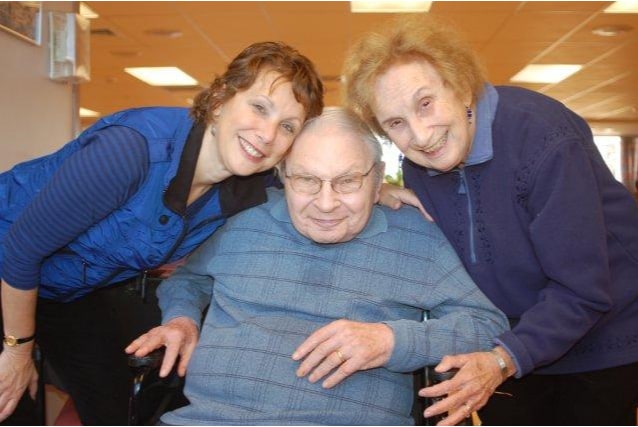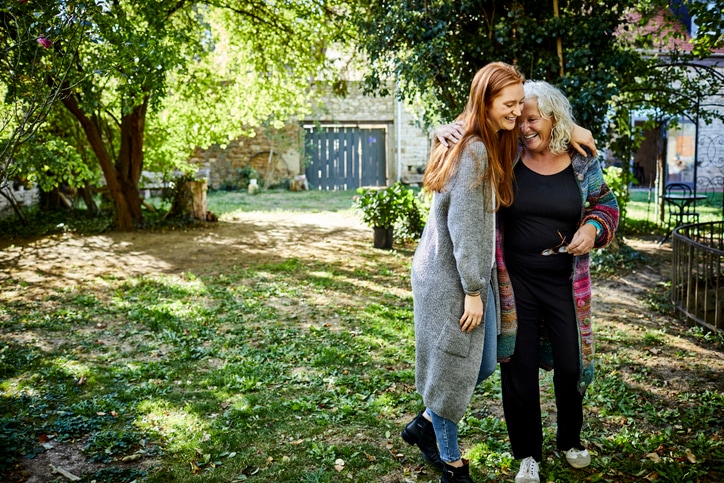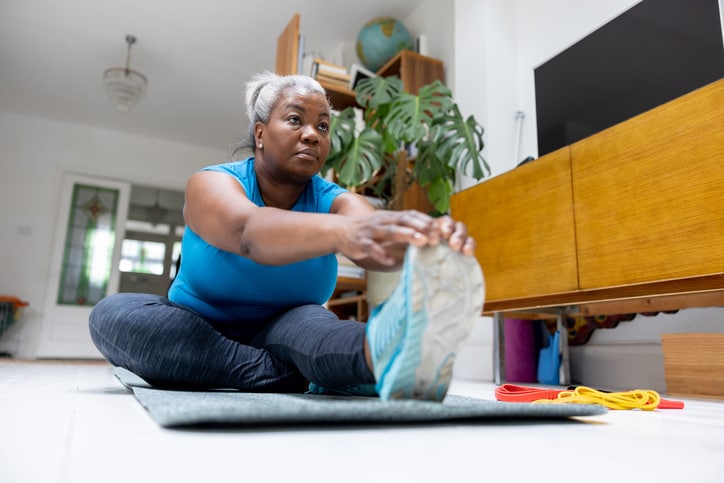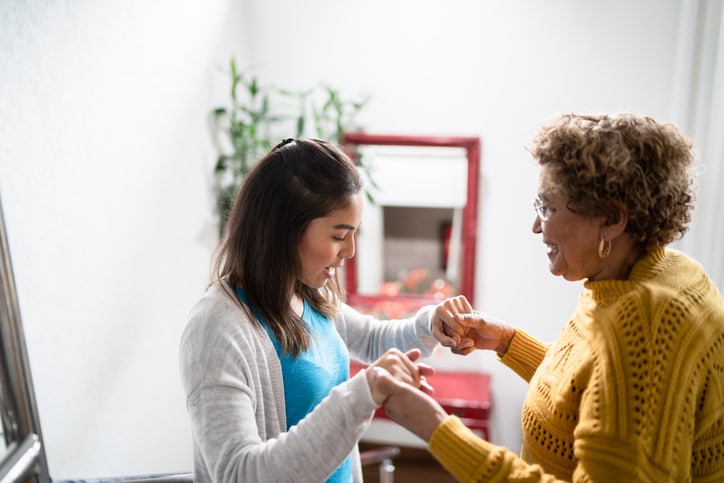By Jody Gastfriend
In the fall of 2015, I had the opportunity to participate in an event sponsored by UsAgainstAlzheimer’s, an organization dedicated to the relentless mission of finding a cure for Alzheimer’s disease. The organization was founded by Trish and George Vradenburg, a wealthy, politically connected couple who decided to spend their personal fortune to achieve this audacious goal. Trish, whose mother died from the disease, was a former comedy sketch writer for television and didn’t hesitate to infuse humor into the intensity of her passion. Referring to the fact that her children’s inheritance is being funneled to this worthy cause, Trish explained, “Our daughter [who happened to be sitting in the audience] is just going to have to get used to rhinestones.” Sadly, Trish died in 2017, but her crusade against Alzheimer’s disease lives on. By lobbying government, industry, and the scientific community, the organization is sending a loud and clear message: We won’t wait. We are all of us, members of the global community, both those already impacted by Alzheimer’s disease and dementia and those who recognize that we may be in the future. We are hoping to use our collective voice to encourage political leaders to fund research and treatment now so we can eradicate this terrible disease once and for all.
I was inspired by the event and met family caregivers and professionals in the field—most who’d been personally impacted by the disease and understood the toll it takes. The numbers alone are staggering: as of 2017, an estimated 5.5 million Americans have Alzheimer’s disease, and 47 million people worldwide suffer from it. By 2050 these estimates are projected to triple and the direct cost to American society may exceed a trillion dollars—a price we all will pay in one way or another. Although the disease does not discriminate, it disproportionately impacts women. Women are twice as likely to suffer from Alzheimer’s and more than twice as likely to care for someone with the disease. Despite these dire predictions, a nationally representative study indicated that dementia rates in the United States unexpectedly fell from 2000 to 2012. Even so, the greatest risk factor is age, and those over eighty-five are the most vulnerable. Without a cure, most of us fortunate enough to grow old will not be spared from this scourge. Over the course of a lifetime, we will likely care for someone with the disease or have it ourselves.
When my father first began showing signs of dementia, it was gradual, like a light rain before what would eventually become a monsoon. Initially we were not concerned about his forgetfulness, attributing it to his getting up in years. As many of my fellow boomers will attest, a certain amount of absent-mindedness is expected as we get older. We watch a Netflix film halfway through before we realize we’ve seen it before. Or we read a book, put it down for a few days, and then have to reread previous chapters to remember what the heck’s going on. But dementia is different. It is a brain disease, not a manifestation of encroaching age. It robs victims of the ability to function as independent human beings, first gradually, then more rapidly as the monstrous malady runs its course. When I describe the course of my father’s illness, I typically use the term dementia, which includes a category of diseases characterized by a severe decline in mental functioning that interferes with daily life. We don’t definitively know what type of dementia plagued my dad, but because of his history of hypertension and heart disease, we assume it may have been vascular dementia, the second most common variety. And perhaps my grandmother, who had a paranoid fixation that a gang was out to get her, suffered from Lewy body dementia, which has symptoms that include visual hallucinations and delusions. Back then it was just called senility. Alzheimer’s is the most prevalent type of dementia, accounting for about 60 to 80 percent of all cases. Today, through clinical examination and neuroimaging, a diagnosis can be made by a skilled memory disorder specialist with a high degree of accuracy. But once you have a diagnosis, there is no shying away from how grim this news is, because you are dealing with a progressive and ultimately fatal disease with no cure in sight.
In the early stages, short-term memory is among the first casualties. This can be particularly exasperating for caregivers, who find that they are listening to the same stories or responding to questions repeated over and over again. Information is not easily retained, which makes any kind of communication challenging. I recall my father’s alarm when he woke up every morning to discover that my mother was in the hospital, where she’d been for a week, as if this was new and jarring news each day. Only when I made an actual sign, explaining the facts in a simple and straightforward manner, did my father gain some control over the situation, allowing his anxiety to eventually subside. As time progresses, the insidious disease will do more damage. Eating, bathing, walking, and going to the bathroom—activities of daily living that are so vital to identity and dignity—will become compromised. During the time my father lived with me, he could get dressed by himself with minimal help. He also was able to take his own shower, or so I thought, until one day I found water dripping from the dining room ceiling. When I went upstairs to check, I found my dad had forgotten to close the shower curtain. The bathroom floor was a lake. This incident, along with many to follow, signaled further decline and was a painful reminder of the relentless ferocity of his disease.
The Path to Connection
When words that once flowed fluidly are irretrievable or jumbled beyond comprehension, the path to connection becomes increasingly severed. During the middle stage of dementia, my father, a highly educated and articulate man, had difficulty following conversations and would often nod in feigned understanding when someone asked him a simple question. Eventually, communication becomes more elusive and the world increasingly out of reach for dementia’s victims. In the last stage, many people, like my father, need constant care and oversight. They cannot communicate basic needs such as discomfort, hunger, or pain. They must rely on someone else to do what they can’t do for themselves. They need a lifeline, no matter how small their world has become. We are that lifeline, because despite all that’s been lost, the ability to love and be loved remains. If we are willing to open ourselves up to what Dr. Bill Thomas, a renowned geriatrician and healthcare innovator, refers to as “transcending the tragedy narrative and engaging with possibility,” we may uncover what is still there.
John Zeisel, PhD, in his book I’m Still Here, puts forth a radical new paradigm about understanding Alzheimer’s and pushes us to reexamine our assumptions about the disease. The mind of someone with dementia, according to Zeisel, is a creative and active one. Through stimulating the senses and engaging with the emotional self, caregivers can find a powerful path to connection. Creative outlets such as music and art can stimulate the brain and decrease agitation, isolation, and despair. Zeisel advocates a mix of nonpharmacological treatments along with standard medical care as the most effective approach to treat Alzheimer’s and dementia. My dad tried a number of the available dementia medications, including Aricept and Namenda, which seemed to temporarily improve his short-term recall and alertness. But despite some mild improvements, no medication or treatment could change the steady, unalterable progression of the disease.
So we did what we could to keep my father as content as possible. Music always seemed to perk him up. During visits to the nursing home, my daughter would sing to my father and he would come alive. Through song, my daughter taught my father some Spanish (a language he did not speak)—remarkably, he would remember some of the words weeks later. Anyone who’s watched Henry Dryer, an unlikely YouTube sensation from the film Alive Inside, may be awestruck by the power of music to awaken a ninety-year-old man with Alzheimer’s who was largely cut off from the outside world. Henry—which also happens to be my father’s name—had barely spoken a word in over ten years. When someone sets up an iPod program at his nursing home and Henry listens to Cab Calloway, the results are dramatic and inspiring. Henry somehow reacquires a lost part of his previous self through his connection to music. Music, according to Oliver Sacks, the famed neurologist and author, “can lift us out of depression or move us to tears. It is a remedy, a tonic, orange juice for the ear.” Sacks went on to describe the impact music had on his neurologically impaired patients. “It can provide access, even when no medication can, to movement, to speech, to life.”
So does that mean that if you play your father’s favorite song, you will get the same result? Maybe, maybe not. Finding a path to connection is different for everyone. In some instances, it will be truly amazing, like Henry’s reaction to his favorite music, but more often it will be a subtle and fleeting awakening of mind and spirit. For the caregiver, it takes a certain amount of trial and error, patience, and hope. As family caregivers, we are so aware of all that’s been lost that it’s difficult to focus on what’s still there. To adapt a glass is half full approach to dementia is no easy feat. But there is a difference between denial, not accepting the disease for what it is, and allowing ourselves the freedom to engage in ways beyond our normal mode of interaction. We must first accept that the person we love will not get better. We must make peace with this harsh reality before we can embrace and understand the altered version of the person we once knew. While the terrible scourge of dementia attacks both mind and memory—the very essence of a person’s selfhood— there is still a part of identity that remains intact.
Even when language fails, we have the ability to connect and show our love in ways both genuine and profound. We can, according to Joanne Koenig Coste, an author and caregiving expert, “learn to speak Alzheimer’s.” Coste defined the term habilitation as a framework for helping caregivers engage by focusing on remaining skills, simplifying the environment, and accepting our loved one’s altered view of reality rather than imposing our own. In order to enter this world, as my mother did, we must first suspend our own hold on reality and learn a new way of communicating, even though it might involve some unusual things—like, perhaps, an imaginary companion.
To read the full chapter you can purchase the book here: https://yalebooks.yale.edu/book/9780300221350/my-parents-keeper






